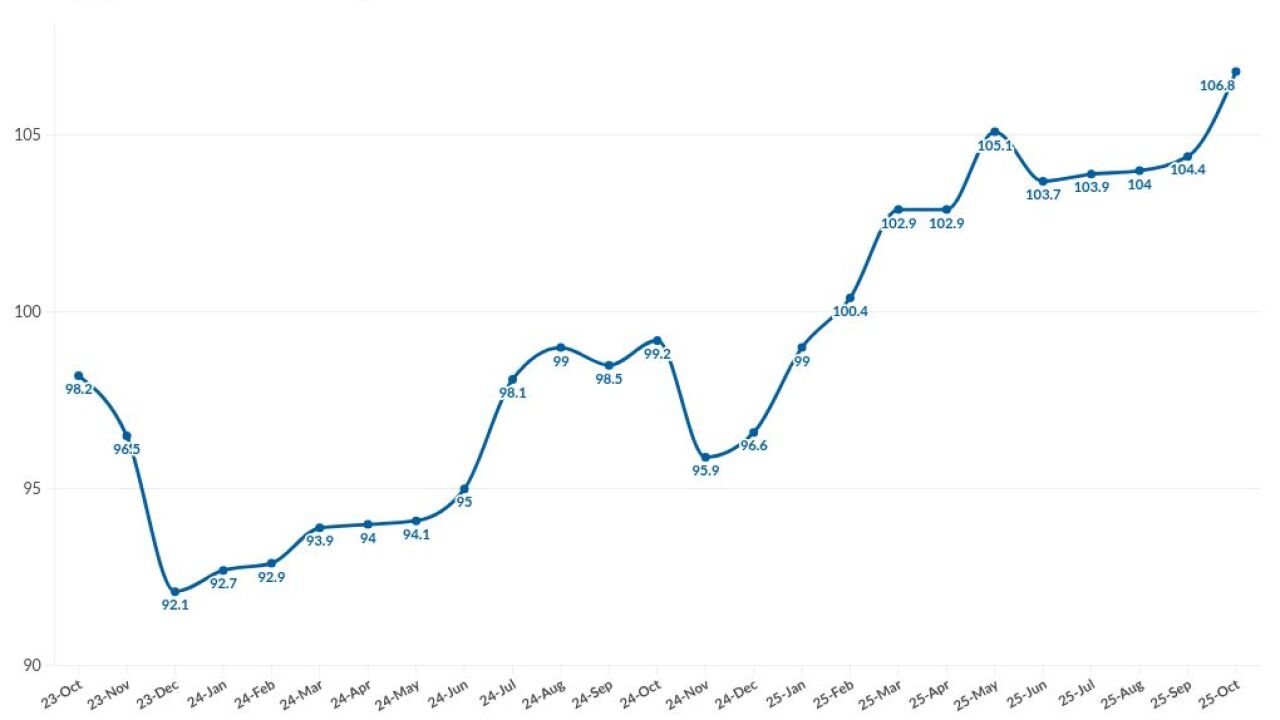Mortgage credit availability hit its highest level in three years last month, driven by a significant growth in conventional mortgages.
The Mortgage Bankers Association's Mortgage Credit Availability Index increased 2.3% to 106.8 in October, marking the fourth consecutive month of growth,
"Credit availability in October rose to its highest level since 2022 as investors broadened their loan offerings over the month," said Joel Kan, the MBA's vice president and deputy chief economist, in a press release Monday. "The increase was driven by growth in conventional mortgage credit availability, while government credit supply changed little."
The conventional MCAI rose 4.1%, while the government MCAI, which measures federally-backed mortgage availability from the Federal Housing Administration, Department of Veterans Affairs and United States Department of Agriculture, increased 0.1%. The jumbo MCAI and conforming MCAI, which make up the conventional MCAI, each increased 5% and 2%, respectively, the report showed.
The MCAI was benchmarked at 100 in March 2012, with growth meaning credit is loosening and drops indicating tightening. It is calculated using several factors, including credit score and loan-to-value ratio, but the number of ARM and cash-out refinance loan programs boosted the credit supply growth, although the programs were mostly limited to higher credit score borrowers, Kan said.
"A steeper yield curve, leading to a bigger differential between fixed-rate mortgage rates in comparison to ARM loan rates, has increased the popularity of ARMs in recent months," he said. "Additionally, more non-QM programs supplemented the increase in the jumbo index to its highest level since 2020."
But the ARM share of mortgage applications decreased in each of the





